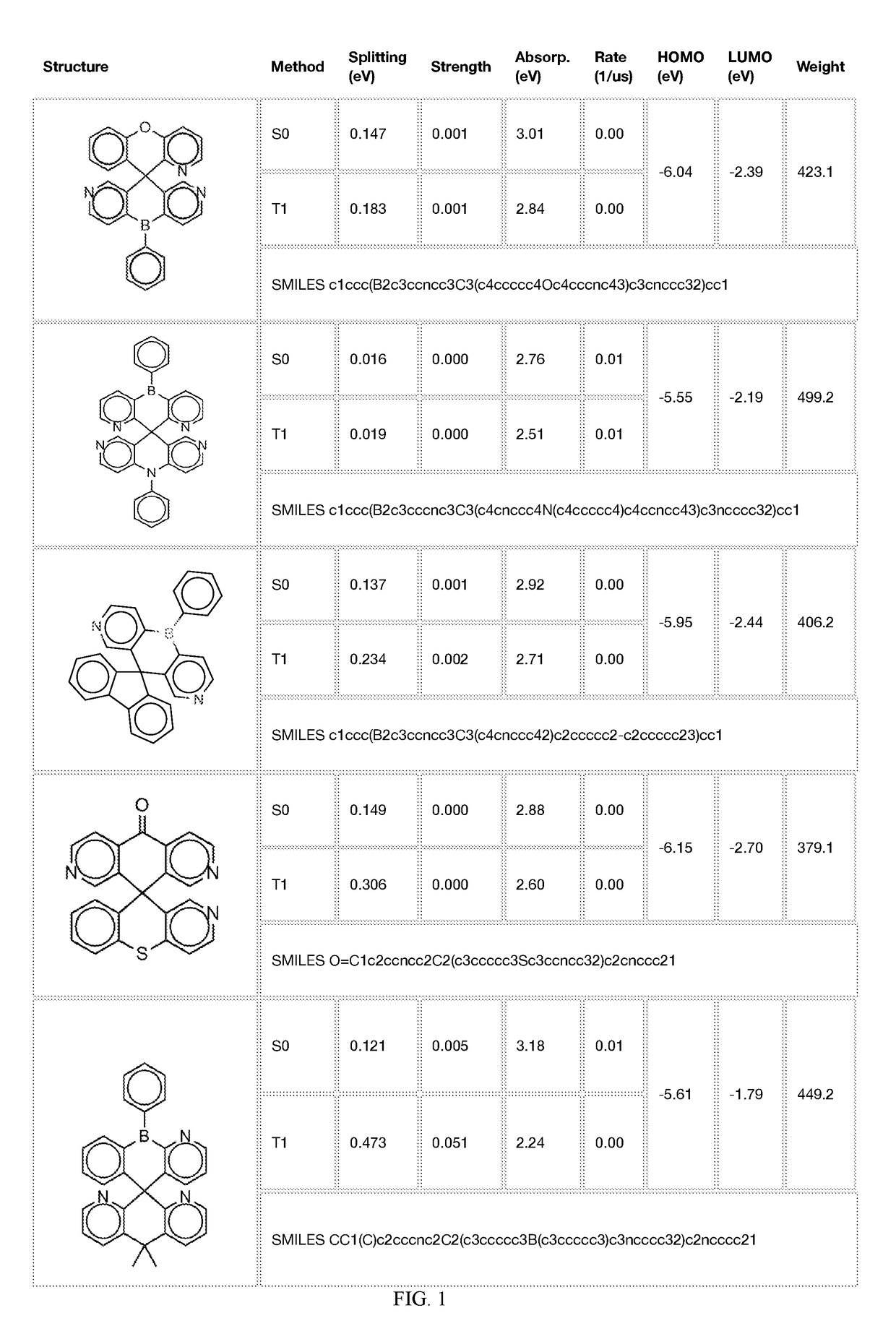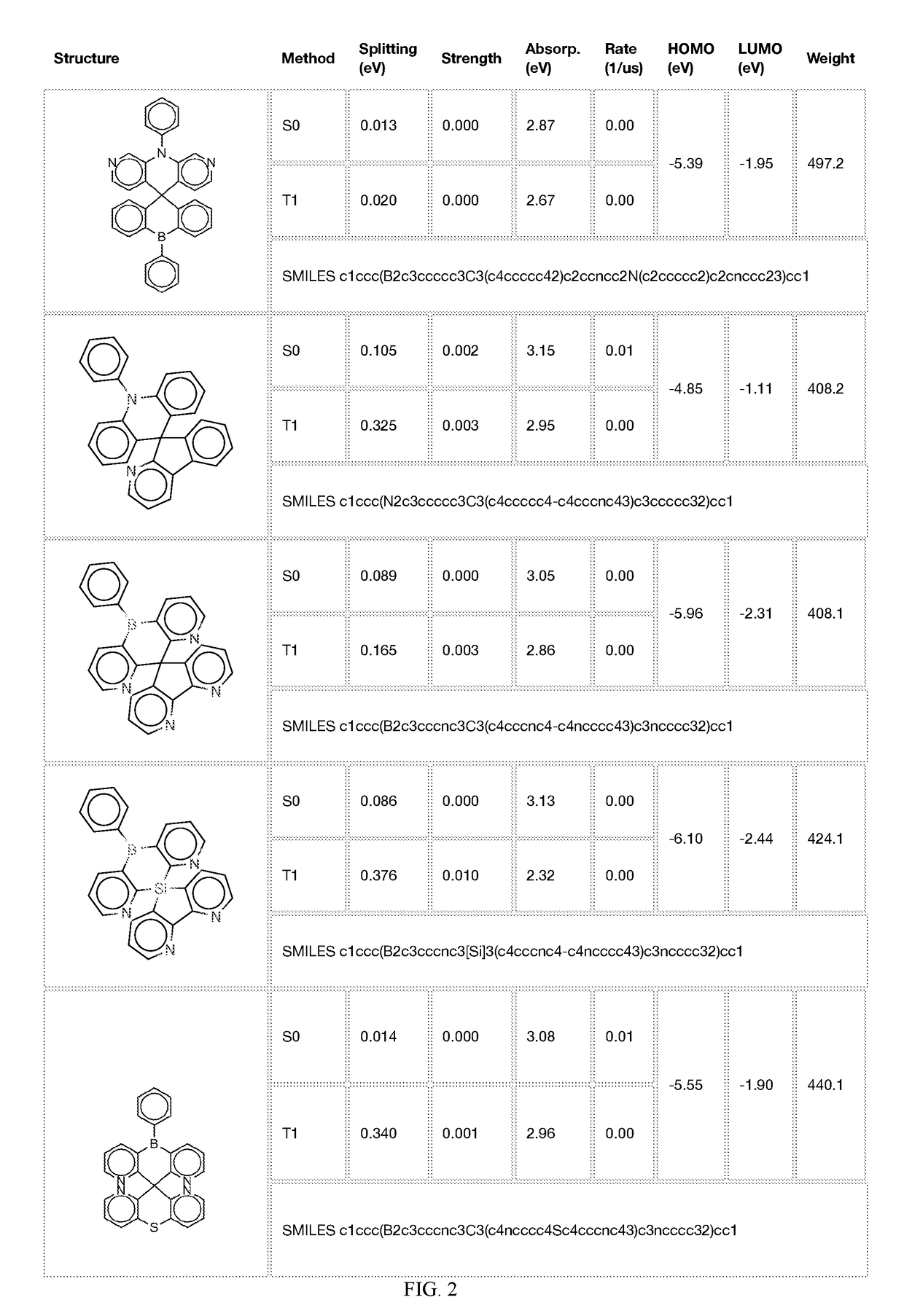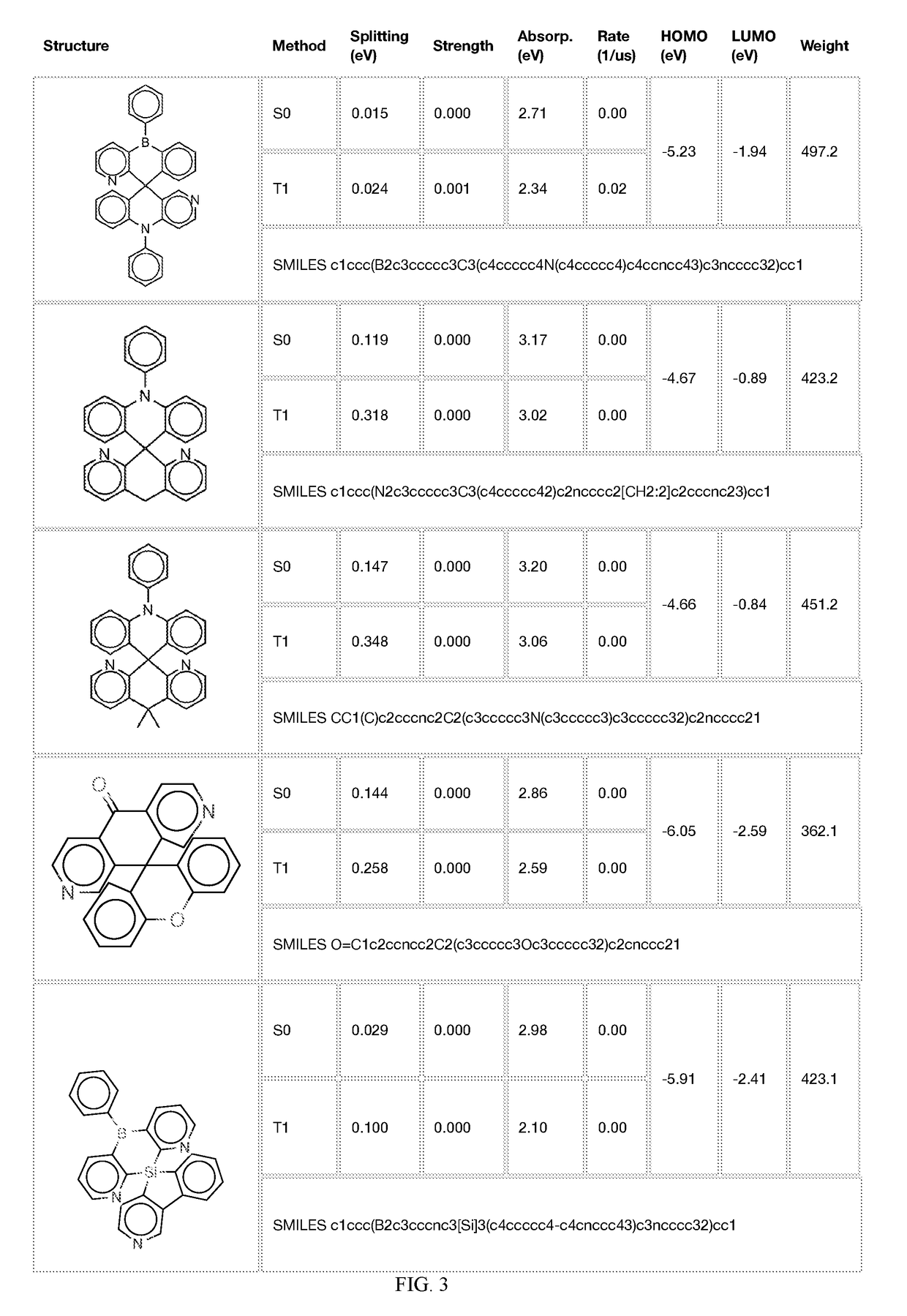Compounds for organic light emitting diode materials
- Summary
- Abstract
- Description
- Claims
- Application Information
AI Technical Summary
Benefits of technology
Problems solved by technology
Method used
Image
Examples
Embodiment Construction
[0015]A description of example embodiments of the invention follows.
[0016]In some embodiments, the present invention relates to chemical molecules that are represented by a combination of fragments α and β, connected by a carbon atom:
[0017]In example embodiments, fragments α and β are not identical. In other examples, fragments α and β are the same.
[0018]In various example embodiments, described below, fragments α and β can be the same or different.
[0019]For example, the molecules of the invention are represented by the following structural formula:
In structural formula (I) of the present invention:
X1 and X2 are independently selected from O, S, C(O), CRaRb. SiRaRb, NRc, BRc, or a bond. Each of A, B, C, and D is, independently, an optionally substituted six-membered aromatic or heteroaromatic ring, wherein at least one of rings A, B, C, and D contains at least one Nitrogen atom.
Each instance of Ra, Rb, and Rc is independently selected from H, a C1-C6 alkyl, a C3-C18 cycloalkyl, a C6...
PUM
 Login to View More
Login to View More Abstract
Description
Claims
Application Information
 Login to View More
Login to View More - R&D
- Intellectual Property
- Life Sciences
- Materials
- Tech Scout
- Unparalleled Data Quality
- Higher Quality Content
- 60% Fewer Hallucinations
Browse by: Latest US Patents, China's latest patents, Technical Efficacy Thesaurus, Application Domain, Technology Topic, Popular Technical Reports.
© 2025 PatSnap. All rights reserved.Legal|Privacy policy|Modern Slavery Act Transparency Statement|Sitemap|About US| Contact US: help@patsnap.com



